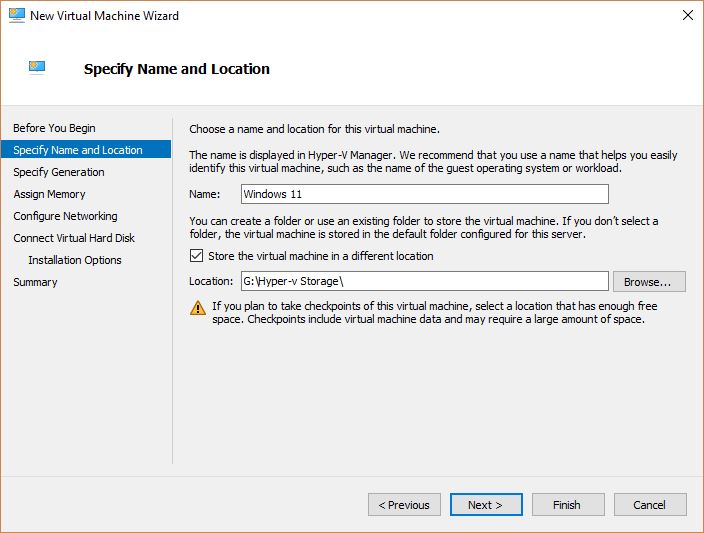How to Create Virtual Machine in Hyper-V on Windows 10?
To create a virtual machine in Hyper-V, you need Hyper-V installed on your computer. For installing Hyper-V or enabling Hyper-V on Windows 10, read the below article. After essential configuration of Hyper-v on Windows 10, try to create a virtual machine using this step by step guide.
In computing, a virtual machine (VM) is an emulation of a computer system. The virtual machines are based on computer architectures and provide the functionality of a physical computer. Their implementations may involve specialized hardware, software, or a combination.
There are different kinds of virtual machines:
- System virtual machines (also termed full virtualization VMs) provide a substitute for a real computer. They provide the functionality needed to execute entire operating systems. A hypervisor uses native execution to share and manage hardware, allowing for multiple environments which are isolated from one another, yet exist on the same physical machine. Modern hypervisors use hardware-assisted virtualization, virtualization-specific hardware, primarily from the host CPUs.
- Process virtual machines are designed to execute computer programs in a platform-independent environment.
Some virtual machines, such as QEMU, are also designed to emulate different architectures and allow execution of software applications and operating systems written for another CPU or architecture. Operating-system-level virtualization allows the resources of a computer to be partitioned via the kernel’s support for multiple isolated user-space instances, which are usually called containers and may look and feel like real machines to the end-users.

Create Virtual Machine in Hyper-V on Windows 10
Creating a virtual machine on Hyper-V is easy, and this tutorial is just a short lab manual guide. You learn how to create a virtual machine in Hyper-V on Windows 10.
Before using Hyper-V on Windows 10 for server virtualization, you need to check your system requirement. It’s terrible that you can not install Hyper-V role on Windows 10 Home edition.
Hyper-V System Requirements on Windows 10:
- Windows 10 Enterprise, Professional, or Education
- 64-bit Processor with Second Level Address Translation (SLAT).
- CPU support for VM Monitor Mode Extension (VT-c on Intel CPU’s).
- Minimum of 4 GB memory.
You can not install the Hyper-V role on Windows 10 Home. You must upgrade from Windows 10 Home edition to Windows 10 Professional for creating a Hyper-v virtualized environment.
But for creating a virtualized network environment for practising server virtualization, install VirtualBox or VMware on Windows 10 Home edition. Read the article about creating virtual machine on VMware on Windows 10.
